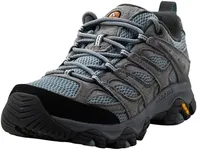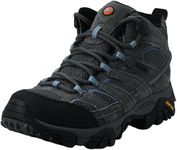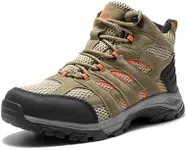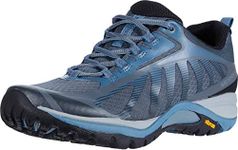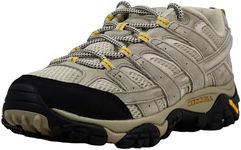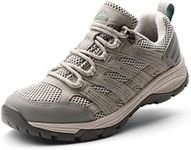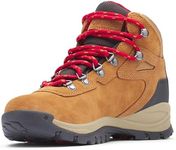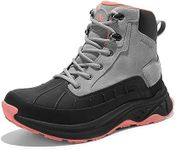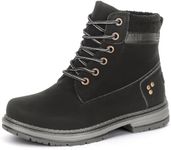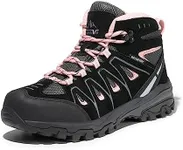Buying Guide for the Best Women's Wide-Width Hiking Shoes
Choosing the right pair of women's wide width hiking shoes is crucial for comfort, support, and overall hiking experience. The right shoes can prevent blisters, foot pain, and other discomforts that can ruin your hike. When selecting hiking shoes, consider the terrain you'll be hiking on, the weather conditions, and the duration of your hikes. Here are some key specifications to consider when picking the best hiking shoes for you.Fit and WidthFit and width are essential for comfort and preventing foot issues. Wide width shoes are designed to accommodate wider feet, providing more room in the toe box and midfoot. When trying on shoes, ensure there's enough space to wiggle your toes and that the shoes don't pinch or squeeze any part of your foot. If you have particularly wide feet, look for brands that offer extra-wide options.
Support and CushioningSupport and cushioning are important for reducing foot fatigue and providing stability on uneven terrain. Hiking shoes should have good arch support and a cushioned midsole to absorb shock. For those with high arches, look for shoes with extra arch support. If you have flat feet, choose shoes with a more supportive insole. The level of cushioning can vary from minimal to maximum, so pick based on your comfort preference and the type of terrain you'll be hiking.
Traction and OutsoleTraction and outsole are critical for maintaining grip on various surfaces. The outsole is the bottom part of the shoe that makes contact with the ground. Look for shoes with deep, multi-directional lugs for better grip on rocky, muddy, or uneven trails. If you plan to hike on well-maintained paths, a less aggressive tread pattern may suffice. For more challenging terrains, opt for shoes with a more rugged outsole.
Waterproofing and BreathabilityWaterproofing and breathability are important for keeping your feet dry and comfortable. Waterproof shoes are ideal for wet conditions, stream crossings, or rainy weather. However, they may be less breathable, which can lead to sweaty feet in hot weather. If you hike in dry, warm climates, consider shoes with breathable mesh uppers to keep your feet cool. For versatile use, look for shoes with a balance of waterproofing and breathability.
WeightWeight of the shoes can affect your hiking experience, especially on longer hikes. Lighter shoes can reduce fatigue and make it easier to cover more distance. However, they may offer less support and durability. Heavier shoes typically provide more support and protection but can be more tiring to wear over long distances. Choose the weight based on the length and difficulty of your hikes, as well as your personal preference for support versus agility.
DurabilityDurability is important for ensuring your hiking shoes last through many adventures. Look for shoes made with high-quality materials such as leather, synthetic fabrics, and reinforced stitching. Consider the type of terrain you'll be hiking on; rough, rocky trails may require more durable shoes. If you hike frequently, investing in a more durable pair can save you money in the long run.

